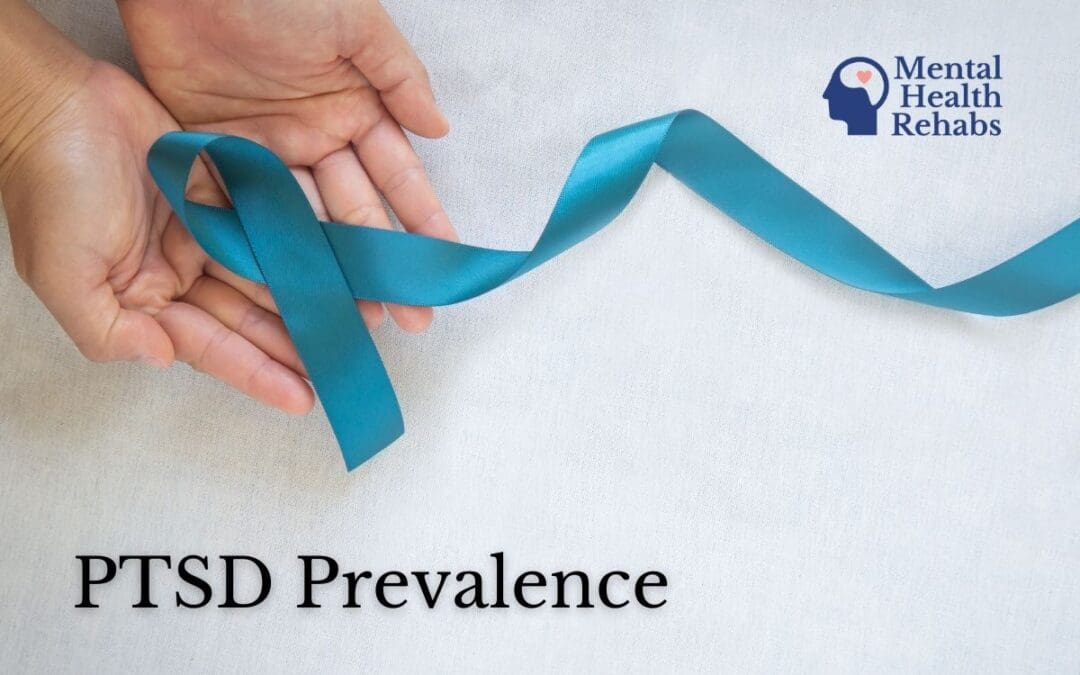At least 6 out of every 100 people in the US will experience PTSD at some point in their lives. While Post-Traumatic Stress Disorder (PTSD) is often associated with war veterans, it’s a mental health condition that affects millions of people of all ages, gender, and walks of life. Let’s take a closer look at the prevalence of PTSD, breaking down the statistics and how it affects different populations.
What is PTSD?
Post-Traumatic Stress Disorder (PTSD) is a mental health condition that can happen to anyone who has experienced or witnessed a traumatic event. Such events can be natural disasters, serious accidents, wars, sexual assault, terrorist attacks, gun violence, or personal assault.
Keep in mind that not everyone with PTSD has been through these traumatic events. Sometimes, just learning that a friend or family member has experienced trauma can trigger PTSD.
PTSD is characterized by intrusive flashbacks of the traumatic event that might result in avoidance, changes in mood, thoughts, and even physical and emotional reactions. People with PTSD may often feel stressed or frightened, even when they’re not in danger.
How Common is PTSD?
PTSD is much more common than people realize. Unfortunately, it’s difficult to accurately define how many people have PTSD. This is because no studies ask everyone about this condition, and most studies have been geared only toward people already diagnosed with PTSD. In addition, at different points in time – like during an active war or a pandemic – more people are at risk of PTSD because more people are experiencing a traumatic event.
Nonetheless, the National Center for PTSD estimates that PTSD affects about 5% of the US adult population, roughly 13 million people in any given year, as of 2020.
PTSD in Adults
The National Institute of Mental Health (NIH) reports that an estimated 3.6% of US adults struggled with PTSD in the past year. Over their lifetimes, 6.8% will experience PTSD.
The symptoms of PTSD are measured with the Sheehan Disability Scale, a tool for assessing functional impairment. Approximately 37% of adults with PTSD experienced serious impairment, 33% moderate, and 30% mild impairment.
PTSD in Teenagers
While most statistics focus on adults, PTSD can also impact adolescents between 13 and 18. Roughly 5% of US adolescents struggle with PTSD. Within this group, about 1.5% experience severe impairment due to PTSD. Studies also showed that later teen years (17-18) are often the most affected by PTSD, with a prevalence of 7%, compared to 5% for the age group 15-16 and 3.7% for those 13-14.
PTSD in Women vs. Men
While PTSD can affect anyone who has been through a traumatic event, some groups are more susceptible than others. Females are more likely to struggle with PTSD, with 5.2% experiencing symptoms in the past year, compared to 1.8% of males. This is partly due to the types of traumatic events women experience – such as sexual assault – compared to men.
Similarly, among adolescents, PTSD affects females more than males, at an 8% rate for girls and 2.3% for boys.
However, some groups within the male population, particularly those involved in active combat roles, show higher rates of PTSD. According to the US Department of Veteran Affairs (VA), about 11-20% of veterans deployed experienced PTSD in a given year.
Understanding and Addressing PTSD
PTSD treatment is becoming increasingly available. One study found that at least 46% of people with PTSD improved after six weeks of psychotherapy. About 62% of people receiving medication for PTSD also showed improvement. The VA recognizes the need for PTSD treatment, making it available at all VA locations.
Treatment for PTSD usually includes psychotherapy, medications, or a combination of both. Treatment often focuses on addressing the traumatic situation and symptoms of PTSD, which include depression, panic disorders, suicidal thoughts, and substance abuse. Research shows that family and friend participation in treatment can also be an important part of recovery.
If you or someone you know is struggling with PTSD, remember that there’s help available. Call or text the 988 Suicide and Crisis Lifeline. In life-threatening situations, call 911. Numerous centers offer treatment, as well as support groups you can attend. Talk to your doctor or reach out to a counselor to help you find the right treatment.

